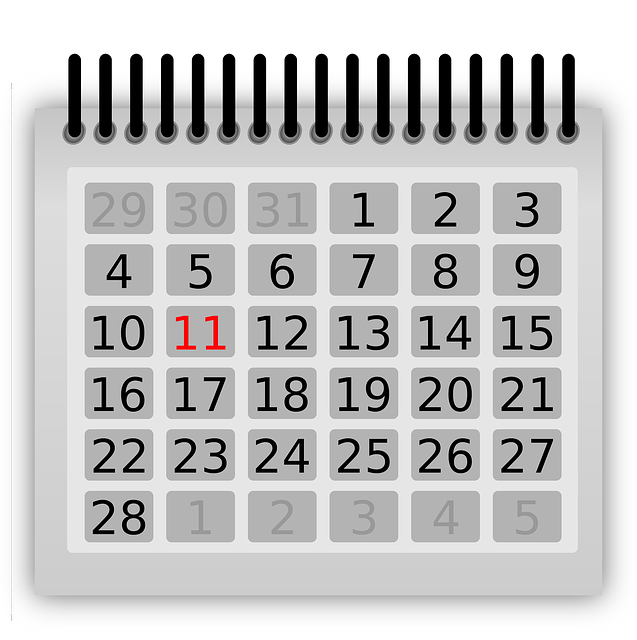Every business is required to have portable fire extinguishers on their premises as a crucial safety measure. Simply having them is not enough, have you asked yourself ‘how often should fire extinguishers be visually inspected?’
Regular visual inspections are essential to ensure that each fire extinguisher is ready to use in case of an emergency.
In this article, we will:
- Delve into the reasons for regular fire extinguisher visual inspections.
- Discuss the benefits they offer.
- Explore the frequency with which these inspections should be conducted.

We will also cover:
- Who should conduct these inspections.
- What to look for during an inspection.
- How to identify potential issues.
- How to perform and document these inspections properly.
Reasons for Regular Visual Monthly Fire Extinguisher Inspections
By visually inspecting these devices on a regular basis, we can identify any potential issues that may affect the extinguisher’s performance when it’s needed most.
One reason for conducting regular visual inspections is to ensure that fire extinguishers are located in the correct location and easily accessible. Over time, workplace layouts may change, and objects may be moved or their position is rearranged. With a visual inspection we can confirm that they are still placed strategically and can be readily located and accessed during an emergency.

Moreover, during visual inspections, we can also take the opportunity to educate employees about the importance of fire safety and the proper use of fire extinguishers. This additional step not only reinforces their knowledge but also empowers them to take responsible and immediate action in case of a fire emergency.
Hints & Tips
Fire extinguishers are often subjected to various environmental factors that can cause wear and tear. By visually inspecting them, we can detect any dents, cracks, or visible signs of rust that may compromise their effectiveness.
Furthermore, visual inspections provide an opportunity to check the condition of the fire extinguisher’s hose and nozzle. These components are essential for directing the extinguishing agent accurately. By examining them closely, we can ensure that there are no blockages or damages from leakage that could hinder the extinguisher’s performance.
Another critical reason for visual inspections is to verify that the pressure gauge on the fire extinguisher displays the correct pressure level. This ensures that the extinguisher is charged and ready for use. Without this visual check, it would be impossible to know if the fire extinguisher is still operational.
Additionally, during visual inspections, it is important to check the extinguisher’s safety pin and tamper seal indicator. These indicators provide visible evidence that the extinguisher has not been tampered with or used previously. By ensuring the integrity of the pin and these indicators, we can have confidence in the reliability of the fire extinguisher.
Time to Answer ‘ How Often Should Fire Extinguishers Be Visually Inspected?’

The frequency of fire extinguisher visual inspections depends on various factors, such as local regulations, the type of fire extinguishers being used, and the specific hazards present in the building. Generally, visual extinguisher inspections should be conducted:
- Monthly: A quick visual check by designated personnel to ensure the extinguishers are in the correct locations and are free from obstructions.
- Annually: A thorough maintenance inspection by a certified professional to check for any potential issues that may have arisen over the past year.
- After Usage: After any fire extinguisher has been used, it must be visually inspected and recharged or replaced as necessary.
The Benefits of Monthly Visual Inspections
Regular visual inspections provide more visibility and a range of benefits for businesses and their employees:
- Enhanced Safety: A visual check can offer peace of mind by ensuring that fire extinguishers are in optimal condition, increasing the safety of everyone in the building.
- Faster Response Time: Inspected extinguishers are more likely to work correctly, reducing the response time during emergencies and potentially minimizing the extent of a fire.
- Compliance with Regulations: Conducting visual inspections regularly keeps businesses in compliance with fire safety regulations, avoiding potential penalties or legal issues.
- Maintenance Cost Control: Identifying issues early on through visual checks allows for timely maintenance or repairs, preventing costly replacements in the future.
- Employee Awareness: Visual inspections can also serve as an opportunity to educate employees about fire safety, teaching them how to use extinguishers effectively.
Who Should Conduct Fire Extinguisher Visual Inspections?
When it comes to visually checking fire extinguishers, it is important to assign this responsibility to trained individuals capable of recognizing potential issues. This could be delegated to in-house personnel who have received proper training or outsourced to professional fire safety service providers. Employers can assign a facility manager, safety officer, or staff member to perform checks.
For the annual thorough visual inspection, it is strongly recommended to engage the services of certified fire safety professionals who possess the necessary knowledge and expertise to identify potential problems and take steps to ensure compliance with regulations.
What to Look for When Visually Checking Fire Extinguishers
The following aspects should be checked:
- Location: Ensure fire extinguishers are in their designated locations and easily accessible.
- Physical Condition: Look for any signs of obvious physical damage, such as dents, cracks, or corrosion.
- Pressure Gauge: Verify that the pressure gauge is within the acceptable range.
- Seals and Tamper Indicators: Ensure that seals and tamper indicators are intact.
- Operational Instructions: Confirm that operation instructions are present and legible.
- Last Service Date: Examine the fire extinguisher tag for the date of the last service.
By diligently checking these aspects, potential problems can be identified early, and the necessary actions can be taken promptly.
If issues are present during a visual inspection, further action, such things such as maintenance, repair, or replacement, may be necessary to ensure the fire extinguisher’s effectiveness.
Fire Extinguisher Visual Checks

To ensure successful fire extinguisher visual checks, consider the following tips:
- Establish a schedule: Set a regular schedule for the monthly and annual visual inspections to ensure they are not overlooked.
- Training: Provide proper training to designated personnel or engage certified professionals to conduct inspections.
- Document and track inspections: Maintain detailed records of inspections, including dates, findings, and actions taken.
- Replace when necessary: If a fire extinguisher fails a visual check, promptly replace it or arrange for repairs.
By adhering to these tips, businesses can create a systematic approach to fire extinguisher maintenance and visual inspections, promoting safety and compliance.
Common Issues Discovered During Fire Extinguisher Visual Checks
During a monthly fire extinguisher inspection several common issues are frequently discovered:
- Lack of access due to objects blocking or obstructing fire extinguishers.
- Physical damage caused by workplace accidents or negligence.
- Expired maintenance tags or missing inspection records.
- Corrosion from exposure to moisture or corrosive substances.
- Pressure gauges reading outside the acceptable range, indicating potential issues with the extinguisher’s charging.
By being aware of these common issues, businesses can focus their attention on addressing them during their monthly visual inspections and, maintaining their fire safety standards.
Report expired service tags and missing, damaged, or used extinguishers immediately
Local Legal Requirements
Inspecting fire extinguishers is not only essential for safety but also a legal requirement in most jurisdictions. Local fire codes and regulations often mandate a specific frequency for these inspections. Failure to comply with these requirements can result in fines or penalties.
It is crucial for businesses to familiarize themselves with the specific regulations in their area and ensure that the necessary inspections are conducted accordingly.
How to Document Fire Extinguisher Visual Inspections

Proper documentation of fire extinguisher visual inspections is crucial for compliance and quality assurance purposes. It provides evidence of inspections conducted and any actions taken as a result. When documenting these inspections, consider the following:
- Record the inspection date and the name/s of the individuals who performed the inspections.
- Capture any findings or issues discovered during the inspection.
- Document the actions taken, such as maintenance, repair, or replacement.
- Maintain a record of the fire extinguisher’s maintenance history, including dates of previous inspections and actions taken.
By documenting these inspections thoroughly, businesses can demonstrate compliance with regulations and track the status of their fire extinguishers effectively.
To Sum Up Our ‘How Often Should Fire Extinguishers Be Visually Inspected?’ Post
Inspecting a fire extinguisher visually once a month is an essential aspect of maintaining a safe work environment. By doing this you can ensure that fire extinguishers are readily accessible and in optimal condition should an emergency occur.

Implementing a fire extinguisher inspection schedule and documentation process will not only ensure compliance but also allow for timely maintenance or replacements when necessary.
By prioritizing fire extinguisher visual checks, businesses can enhance safety measures, comply with regulations, and protect their people and assets from potential fire hazards.
Additional Reading
Now that you’ve explored how often should fire extinguishers be visually inspected why not check out the following posts:
Learn when to use carbon dioxide extinguishers with our Which Fire Extinguisher is Best for Electrical Fires?
More Helpful Content
Visit our Homepage
